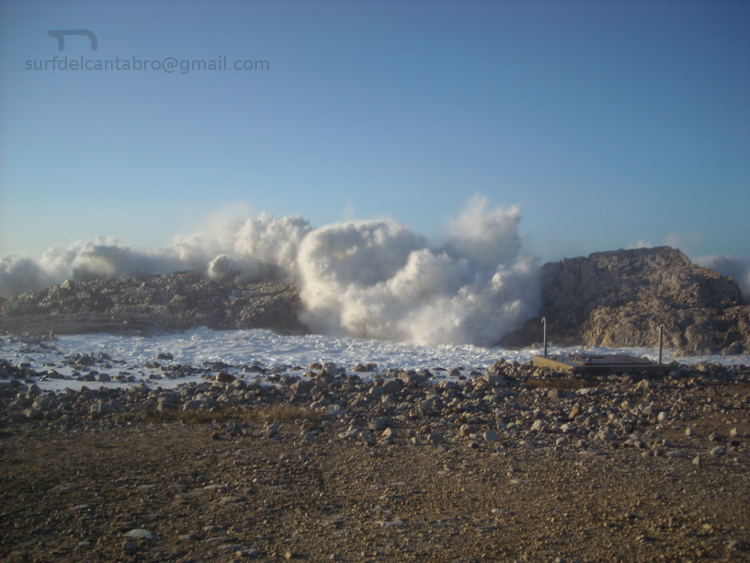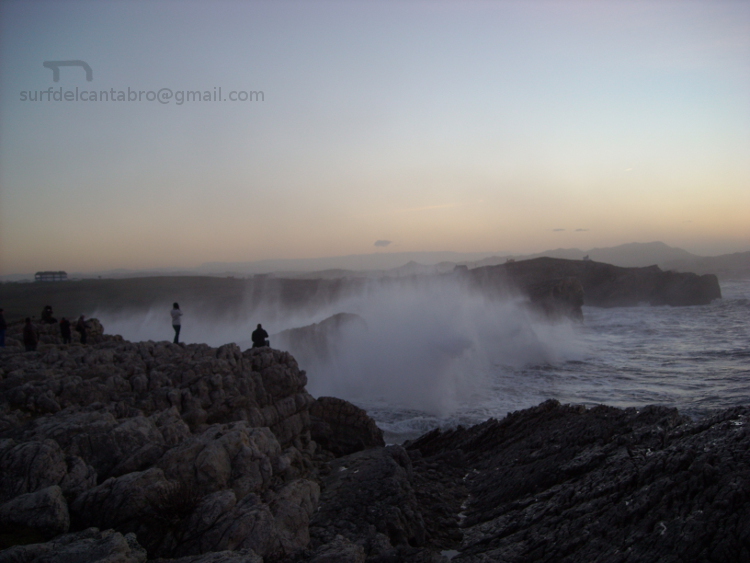 La AEMET (Agencia Estatal de Meteorología del Gobierno de España) había predicho fuerte oleaje durante el primer fin de semana de febrero, con olas que alcanzarían los 8 metros. Este lunes los informativos de televisión y radio han señalado que la boya marítima que recoge el estado del mar en Estaca de Bares , Galicia, registro olas de 13 metros en este período. la Escala Douglas, que clasifica el estado del mar según el viento, asigna a estos días la calificación de Mar Montañosa y cuya definición es la siguiente : «Se ven olas altas con crestas largas que caen como cascadas, las grandes superficies cubiertas de espuma se disponen rápidamente en bandas blancas en la dirección del viento, el mar alrededor de ellas adquiere un aspecto blanquecino«. Un espectáculo impresionante y multimedia. El sonido adelanta la acción y rodea el espacio con un grito armonioso y sobrecargado de energía. Después llega la ola que golpea el acantilado y escala 10, 30 o más metros. Al final pequeñas gotas de agua rota impregnan la figura y uno se siente pequeño.
La AEMET (Agencia Estatal de Meteorología del Gobierno de España) había predicho fuerte oleaje durante el primer fin de semana de febrero, con olas que alcanzarían los 8 metros. Este lunes los informativos de televisión y radio han señalado que la boya marítima que recoge el estado del mar en Estaca de Bares , Galicia, registro olas de 13 metros en este período. la Escala Douglas, que clasifica el estado del mar según el viento, asigna a estos días la calificación de Mar Montañosa y cuya definición es la siguiente : «Se ven olas altas con crestas largas que caen como cascadas, las grandes superficies cubiertas de espuma se disponen rápidamente en bandas blancas en la dirección del viento, el mar alrededor de ellas adquiere un aspecto blanquecino«. Un espectáculo impresionante y multimedia. El sonido adelanta la acción y rodea el espacio con un grito armonioso y sobrecargado de energía. Después llega la ola que golpea el acantilado y escala 10, 30 o más metros. Al final pequeñas gotas de agua rota impregnan la figura y uno se siente pequeño.
Mi consejo : Disfrutar de la mar de forma segura, pues generalmente siempre se sobrepasan las predicciones y en ocasiones con holgura. Doblar la distancia de seguridad.
Seguidamente publico unas imágenes de esos momentos.
Sea Mountain, Cantabrian Sea. Douglas Scale
 The AEMET (Spanish Meteorological Agency of the Government of Spain) had predicted strong waves during the first weekend of February, with big waves of 8 meters. This Monday the news have pointed out that the «marine machine» that covers the state of the sea in Estaca de Bares; Galicia, record waves of 13 meters in this period. The Scale Douglas, which categorizes the state of the sea according the wind, assigns to these days the calification of Sea Mountain, whose definition is the following : ‘High waves are seen with long tops that fall down like cascades, the big covered foam surfaces get ready quickly in white bands in the wind direction, the sea over them acquires a whitish aspect‘. An impressive and multimedia spectacle. The sound moves before the action and surrounds the space with a scream harmonious and overloaded with energy. Later there comes the wave that strikes the cliff and climbs 10, 30 or more meters. In the end small drops of broken water impregnate the figure and one feels small.
The AEMET (Spanish Meteorological Agency of the Government of Spain) had predicted strong waves during the first weekend of February, with big waves of 8 meters. This Monday the news have pointed out that the «marine machine» that covers the state of the sea in Estaca de Bares; Galicia, record waves of 13 meters in this period. The Scale Douglas, which categorizes the state of the sea according the wind, assigns to these days the calification of Sea Mountain, whose definition is the following : ‘High waves are seen with long tops that fall down like cascades, the big covered foam surfaces get ready quickly in white bands in the wind direction, the sea over them acquires a whitish aspect‘. An impressive and multimedia spectacle. The sound moves before the action and surrounds the space with a scream harmonious and overloaded with energy. Later there comes the wave that strikes the cliff and climbs 10, 30 or more meters. In the end small drops of broken water impregnate the figure and one feels small.
My advice: enjoy the sea safely, because usually the Sea always exceeded predictions . Fold the safety distance.
Here some images of these moments.


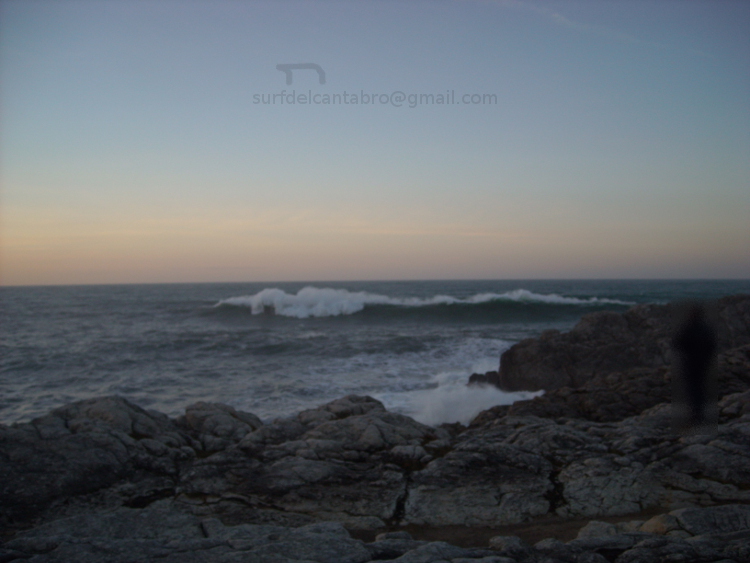


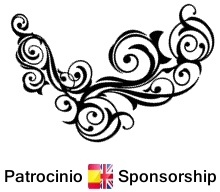
![]() El Brusco puede ser accedido desde el oeste por Santander. A través de la autovía A8, la carretera nacional N-634 y finalizando en el cruce entre las carreteras nacionales CA-141 y CA-147. Desde el este por Bilbao utilizando la autovía A8, las carreteras nacionales N-634 y CA-141 y finalizando en el cruce de esta última con la carretera nacional CA-147.
El Brusco puede ser accedido desde el oeste por Santander. A través de la autovía A8, la carretera nacional N-634 y finalizando en el cruce entre las carreteras nacionales CA-141 y CA-147. Desde el este por Bilbao utilizando la autovía A8, las carreteras nacionales N-634 y CA-141 y finalizando en el cruce de esta última con la carretera nacional CA-147. ![]() «El Brusco» can be accessed from the west by Santander. Through the A8 motorway, the national road N-634 and ending at the crossroad between the national roads CA-141 and CA-147. From the east by Bilbao using the motorway A8, and the national road N-634 and CA-141 and ending at the junction of the latter with the national highway CA-147.
«El Brusco» can be accessed from the west by Santander. Through the A8 motorway, the national road N-634 and ending at the crossroad between the national roads CA-141 and CA-147. From the east by Bilbao using the motorway A8, and the national road N-634 and CA-141 and ending at the junction of the latter with the national highway CA-147. Acceso/Beach Access
Acceso/Beach Access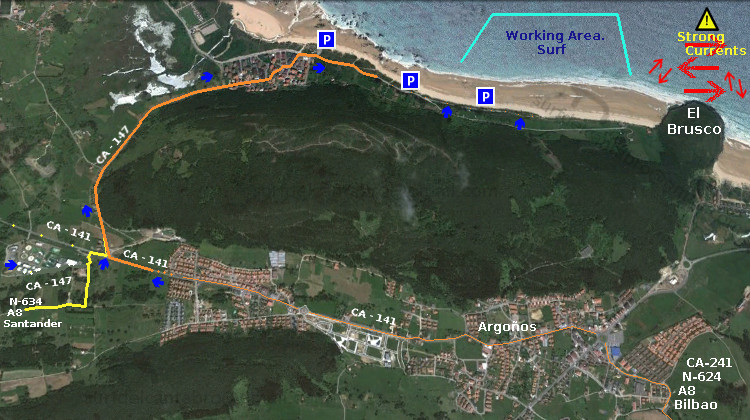
![]()




